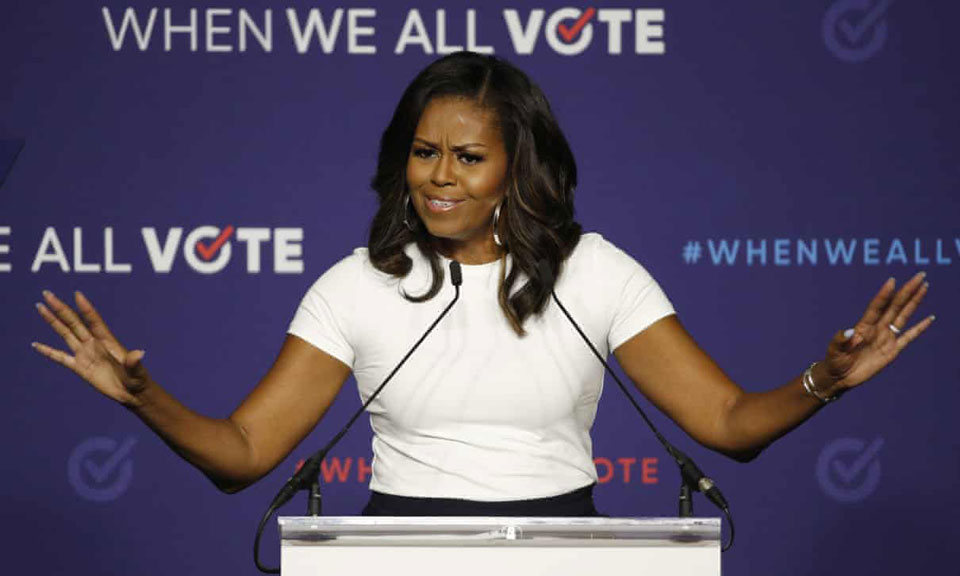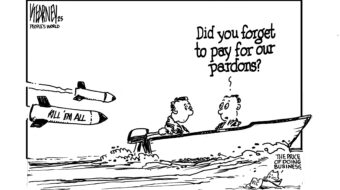
Groups inside and outside the Democratic Party are linking arms in what is a growing national movement to protect the 2020 vote and thereby oust Trump in November.
The massive effort to protect democracy is necessitated, in part, because a record number of votes could well be cast in the 2020 elections. Even under normal circumstances, the entire voting system would be heavily stressed given the fragile state of the U.S. election infrastructure. But with the addition of the COVID-19 pandemic, Trump and GOP voter disenfranchisement and sabotage of the U.S. Postal Service, and the defunding of election operations and organized intimidation of voters, the potential grows for unprecedented chaos and a stolen election.
Nevertheless, a multipronged and well-resourced grassroots movement to defend democracy and protect voting rights that will oust Trump and the GOP is meeting this daunting challenge. The broad alliance, including scores of labor, civil rights, athletes, artists, and voter protection organizations and businesses, is working parallel with the Democratic Party.
The Biden-Harris campaign has launched what campaign attorney Bob Bauer, a special advisor on election integrity and protection, calls “the best resourced and organized voter protection program” perhaps ever, one prepared for all contingencies up to, on, and after election day.
The approach includes public voter education, amassing lawyers for critical state battlegrounds, recruiting and training poll watchers and monitors, and coordinating with local jurisdictions.
The Democratic Party officially launched its plan for voter education and mobilization at the National Convention. Multiple speakers, beginning with Michelle Obama and President Barack Obama, stressed the urgency of preparing to vote now.
“We’ve got to vote early, in person if we can,” said Michelle Obama. “We’ve got to request our mail-in ballots right now, tonight, and send them back immediately and follow-up to make sure they’re received. And then, make sure our friends and families do the same.”
Obama warned voters to anticipate waiting long hours to cast their ballots. “We have got to grab our comfortable shoes, put on our masks, pack a brown bag dinner and maybe breakfast too because we’ve got to be willing to stand in line all night if we have to,” she said.
By some estimates, a majority will cast votes by mail, and election officials are already sending out mail-in ballots. The active sabotage of the U.S. Postal Service, combined with many election officials unprepared for the sheer volume of mail-in applications and ballots, means voters must file applications and return the ballots immediately.
Voters who fear mail-in ballots won’t be delivered in time and want to vote in person are being urged not to wait until November 3. They should early in-person vote where possible and avoid long waits on election day.
Scores of organizations beyond the Democratic Party are educating on voting procedures and protecting the right to vote. They include Fair Fight, headed by Stacey Abrams, targeting 17 critical states, Priorities USA, American Bridge, More Than a Vote, and NextGen, among many organizations outreaching to youth. Besides, The Movement Voter Project is coordinating grassroots voter mobilization efforts targeting African-American, Latino, and Indigenous voters in battleground states.
The groups are spending tens of millions of dollars on voter mobilization and protection. Voter education will help voters understand and navigate a complicated and multi-step process to cast a vote by mail. The objective is to cut down on the number of ballots rejected for whatever reason.
“In the 21st century, voter suppression was the province of the Republican Party,” Abrams told Vice Magazine. “What had not previously happened was an organized strategy by those who believe in an expansion of democracy to actually put the resources behind it. That’s not the case now, and that’s why they’re panicked.”
“Let’s be clear. This is a power struggle,” said Abrams. “We might call it voting. We might call it protesting. This is about power, and power is not going to concede anything. You are not going to undo twenty years of bad actions with two years of fight. But you can make change,” she said.
One element of the broader campaign is ensuring the necessary election infrastructure for voting early and November 3. Polling locations must have a full complement of trained staff and functioning equipment. In the last few election cycles, hundreds of polling locations were closed, understaffed, and operated with broken or missing equipment.
A coalition of over 140 organizations and businesses united under Power the Polls is organizing an unprecedented effort to ensure adequate numbers of polling locations and trained workers who are low risk for COVID-19.
NBA players negotiated an agreement with the league to end the recent strike over the police shooting of Jacob Blake in Kenosha, which addresses some voting protection issues. Arenas owned by NBA franchises will become in-person voting locations. Public service announcements urging people to vote will run during games.
Los Angeles Laker star LeBron James and other African-American professional athletes and artists launched the More Than A Vote campaign. The group is partnering with “When We All Vote” to fight voter suppression. A social media campaign will share information on registering to vote, how and where to vote, and the GOP plot to suppress the vote. The groups are recruiting young people as poll watchers, particularly in the African-American community.
Ensuring local election jurisdictions have enough staffing to count the deluge of mail-in ballots is also a chief concern by the voter protection movement. Organizations are mounting legislative and legal challenges to begin counting mail-in votes as they arrive to prevent the count from dragging long past November 3, as happened during the New York primary, and embroiling the courts to shut down the count.
Finally, relentless legal pressure is being applied on all fronts. For example, the Democratic Party is basing its legal strategy on “four pillars”:
- First, mail-in ballots should come with pre-paid postage. Republicans also support this demand.
- Second, allowing mail-in votes that are postmarked on election day to be accepted. Governor Wolf (D-Pa.) has called for changing the law to make this possible. Republicans oppose this.
- Third, overhauling signature matching laws.
- Fourth, allowing community collection of mail-in ballots, something the GOP derisively calls “ballot harvesting.”
Republicans oppose these.
Besides, legal challenges are ongoing over lifting voter restrictions, including for felons. Florida voters adopted a referendum in 2018, restoring the right to vote to most of the state’s 1.4 million felons. However, the GOP state legislature passed a law mandating all fines, fees, and restitution must be paid first, essentially disenfranchising hundreds of thousands of people with an illegal poll tax. Voting rights groups are challenging that law in court.
But since 2016, 11 states and the District of Columbia have expanded voting rights for currently incarcerated people or former felons, increasing voter rolls by over 1 million people. Before the pandemic, 33 states allowed for mail-in ballots. Today, there are 42 as a result of legislation and legal challenges.
The broad movement to oust Trump and the GOP, defend, restore, and expand democracy, is taking nothing for granted in an election full of extraordinary challenges. Too much is at stake.










